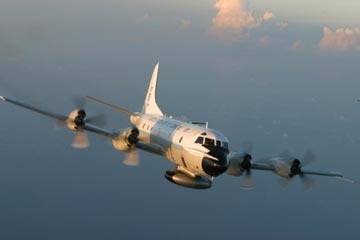Hurricane hunters go deep into storms to improve forecasts.
Hurricane Hunters

Direct airplane observation helps forecasters better identify the storm's potential growth, structure, and consequences on land, while satellites in space are one of the critical ways of monitoring hurricanes. Models that project the storm's path and intensity are fed by their data combined with satellite observations.
Aircrews known as hurricane hunters, typhoon hunters, or cyclone hunters fly into tropical storms to collect weather data. The 53rd Weather Reconnaissance Squadron of the United States Air Force Reserve and the Hurricane Hunters of the National Oceanic and Atmospheric Administration fly these operations throughout the United States. Navy troops, as well as other Air Force and NOAA units, have performed similar missions. Other organizations, such as Government Flying Service Hong Kong, also fly these missions.
Military aircraft conducted normal weather reconnaissance tracks to identify the emergence of tropical cyclones before satellites were used to locate them. While contemporary satellites have enhanced meteorologists' capacity to spot cyclones before they form, planes can correctly measure a storm's internal barometric pressure and offer precise wind speed data-information essential to predict hurricane development and travel accurately.
Hurricane Hunting During Ida

Kendall Dunn, an Air Force pilot, had a personal connection to Hurricane Ida. The Category 4 storm was barreling toward his family's home in southern Louisiana, making it the biggest Atlantic hurricane to landfall last year. He questioned if he had bought enough gas for his family and ordered his nephew to flee. He guided a jet toward the storm's heart while his loved ones drove away from it.
Dunn is one of five "Hurricane Hunters" onboard the WC-130 Hercules aircraft, which flies into hurricanes to collect wind speeds, pressure, and moisture data.
The airplane data has been essential in recent prediction advances and progress in public communication of storm threats. However, the data must be gathered by the plane's crew. Hurricane hunters are entrusted with flying through some of the world's most severe weather situations.
"You definitely can feel the pressures against the airplane, the turbulence, the up and down, the lightning as you get near the eyewall, the most intense portion," Dunn added. "We'll be flying that for approximately 2 minutes, and nobody wants to be there."
The flight meteorologist in the plane's rear assisted Dunn and his co-pilot as they flew through Ida's powerful eyewall, guiding them around the weather and into the rain-free eye.
Climatology, Weather Forecasting, and Meteorology
Climatology and weather forecasting are crucial because they help predict future weather and climate conditions. The possibility of snow and hail reaching the surface, for example, may be determined using latitude. You can also determine how much solar thermal energy is available in a certain area.
To further keep an eye on weather events, meteorology is mainly concerned with present weather conditions such as humidity, air pressure, and temperatures and projecting future weather conditions.
Related Article : Exposure to Major Disasters Can Cause Long-Term Mental Health Problems
For more climate and weather updates, don't forget to follow Nature World News!
© 2025 NatureWorldNews.com All rights reserved. Do not reproduce without permission.





